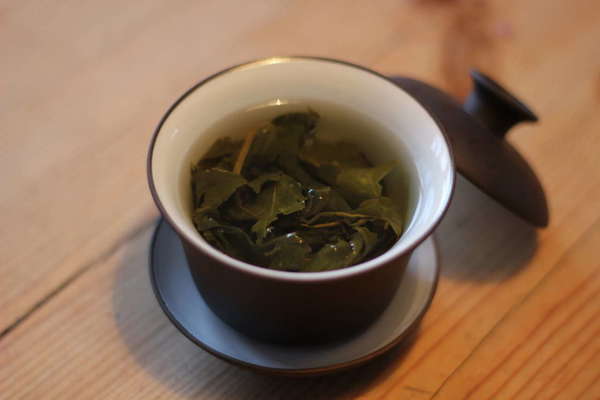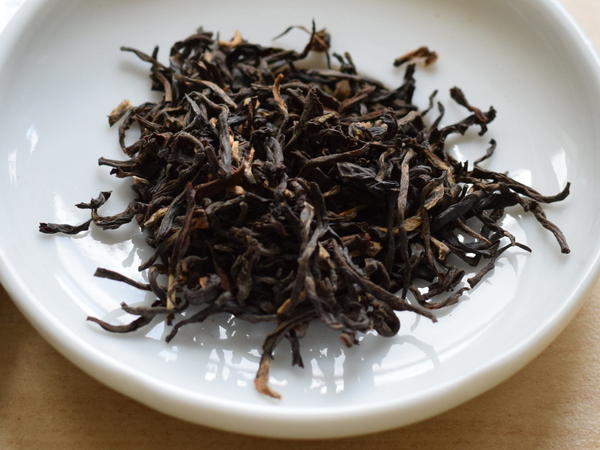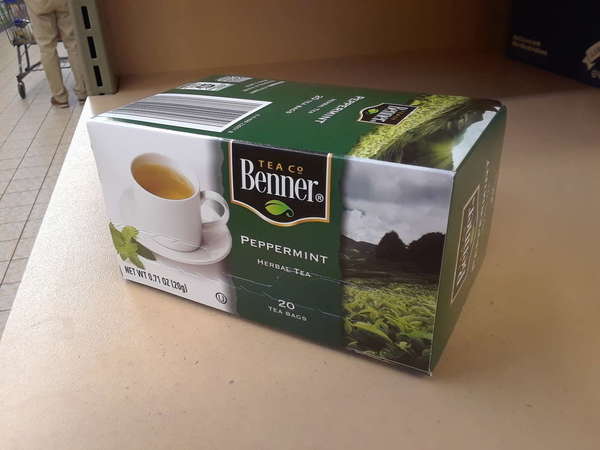Loose Tea
Last Updated: Jul. 30, 2018Loose tea or loose leaf tea is tea that is sold or stored loose or in bulk. Loose tea is usually contrasted with tea bags; here on RateTea, we also distinguish between compressed tea (tea packed into a compact shape, which must be broken before brewing) and blooming tea (tea leaves sewn together into a bloom ready for blooming).
Loose leaf tea is superior to tea bags in terms of sustainability and value, and usually in terms of flavor and quality too. However, it requires more effort, and sometimes more equipment, for brewing.
Brewing and preparing loose tea
The simplest way to brew loose-leaf tea is to throw it in a teapot or mug, and pour hot water on it. For large-leaf, whole-leaf teas, this can be a good method on its own. But for smaller-leafed teas and finely-broken teas, this can lead to small pieces of leaf in your cup, which can be annoying. Vietnamese Oolong Brewing in a Gaiwan, Photo © Micke Nordin, CC BY-SA 2.0.
Vietnamese Oolong Brewing in a Gaiwan, Photo © Micke Nordin, CC BY-SA 2.0.A gaiwan, a traditional Chinese vessel for brewing tea, functions like a strainer by having a lid that can be cracked, to pour out water while keeping the leaf inside.
Advantages of loose tea
Loose tea is more sustainable and offers better value than tea bags.
When buying tea bags, you pay for an industrial packing process which includes both energy and material costs. You also pay for the shipping and storage of the weight and bulk of the packaging materials themselves. When buying loose tea, you pay primarily for the quality of the tea, so you are often able to buy a similar quality of tea for much cheaper.Just how much cheaper is loose tea than tea bags?
To give an example from a mainstream tea company, Twinings Earl Grey is sold both in tea bags and as loose leaf tea in tins. A 100 gram tin, which is enough for brewing about 50 cups of tea, as of writing this article, was selling for $4.49. whereas a box of 50 tea bags cost $5.49. However, the loose tea in the tin also comes with a reusable tin; many tea companies sell bulk tea in bags for a lower price than tea in a tin, because of the cost of the tin.This comparison, in the case of Twinings, does not even take into account that the loose-leaf tea may be fresher and higher quality than the tea bags. When looking at companies with whole-leaf sachets, such as Two Leaves and a Bud, the difference is even more pronounced. This company, like most companies selling whole-leaf sachets, puts the exact same tea in their sachets as they sell as loose leaf, but because the sachets are more expensive, the cost-per-cup of the sachets is about twice the cost of their loose leaf.
Comparison shopping when comparing companies that focus on or specialize in loose leaf tea will yield even greater disparities in price between the tea bags available in most supermarkets and loose leaf tea purchased in bulk.
Is loose tea better tasting than tea bags?
With the exception of possible flavor that the bag itself can impart, and changes in brewing conditions due to the leaf being confined in a bad, there is nothing inherent about tea bags that lead them to taste inferior to loose leaf tea.But few companies package the same quality of tea in tea bags as is sold as loose-leaf. Tea bags usually contain lower grades of tea, more finely broken leaf fannings or dust. The highest grades of tea, and most single-origin teas, are rarely available in tea bags.
Greater control over brewing
Preparing tea from loose-leaf gives you the additional benefit of allowing you to control the exact amount used. When using teabags, you are forced to use whatever quantity is measured out; you can use additional teabags, but the only way to fine-tune the strength of the cup is to change the quantity of water, something you may not wish to do if you desire a particular quantity of tea.But with loose-leaf, you can spoon out any quantity you wish, brewing the tea exactly to your liking!
Storing loose tea
Loose leaf tea is best stored in cool, dark location in an airtight container like a metal tin or resealable bag. You can learn more about details on our page on storing tea.In summary
Loose-leaf tea is superior on nearly all counts: price/value, quality, sustainability, and flexibility. The only downside of its use is convenience, but a good tea infuser can easily remedy this problem.Our site looks to gently steer people in the direction of loose-leaf teas, so that everyone can enjoy its benefits!



